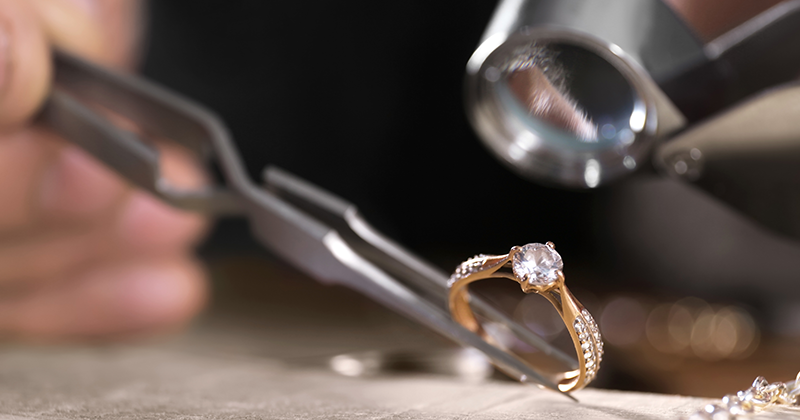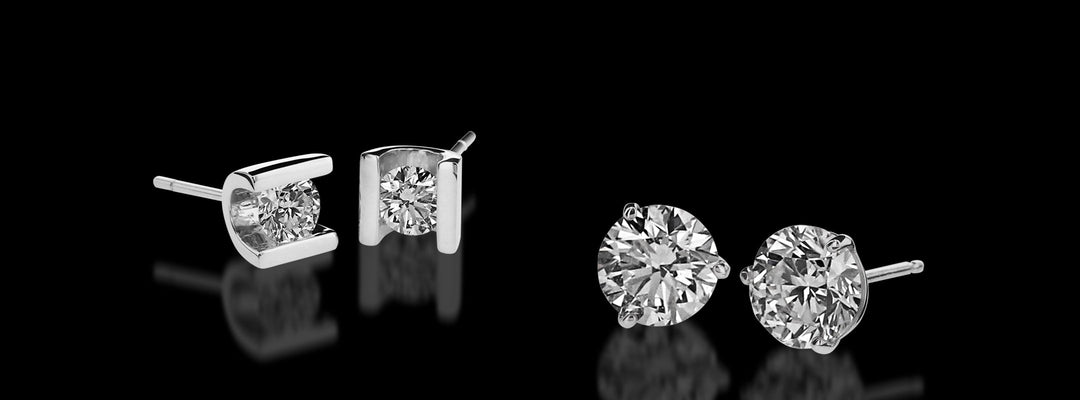Diamond earrings are more than just beautiful pieces of jewelry—they’re sentimental, symbolic, and often a significant financial investment. Whether gifted on a special occasion or bought as a personal reward, protecting these cherished pieces with proper insurance is crucial. In this 2025 comprehensive guide, we’ll explore everything you need to know about insuring diamond earrings, from the types of coverage available to how to choose a provider, estimated costs, and best practices for safeguarding your valuables.
Why Insure Diamond Earrings?
Diamond earrings can range from a few hundred to thousands of dollars, making them prime candidates for insurance. Reasons to insure include:
- Loss: Earrings are small and easily misplaced.
- Theft: High-value items are attractive to thieves.
- Damage: Earrings can be chipped, scratched, or broken.
- Travel Risks: Exposure to loss or theft while on vacation or business trips.
- Peace of Mind: Financial and emotional assurance knowing your items are covered.
Types of Jewelry Insurance
There are multiple ways to insure your diamond earrings:
a. Homeowners or Renters Insurance Riders
- Add a scheduled personal property rider to your existing policy.
- Offers extended coverage for specific items.
b. Standalone Jewelry Insurance
- Offered by companies like Jewelers Mutual, BriteCo, and GemShield.
- Designed specifically for jewelry, with higher coverage limits and fewer restrictions.
c. Valuable Personal Property Policies (VPP)
- Broader than riders; allows grouping multiple items.
- Flexible for collections.
What’s Covered?
Typical coverage includes:
- Loss (Accidental): Misplacing one or both earrings.
- Theft: Robbery or burglary at home or while traveling.
- Damage: Chips, cracks, broken posts, or prongs.
- Mysterious Disappearance: When it’s unclear what happened.
Some policies may also include:
- Worldwide Coverage
- Preventive Repair Costs
- Resetting Stones
Always read the fine print to understand coverage limits and exclusions.
What’s Not Covered?
While comprehensive, policies often exclude:
- Wear and Tear
- Manufacturer Defects
- Improper Storage or Maintenance
- Loss Due to War or Natural Disasters (unless otherwise stated)
Appraisals: The First Step
Before insuring, you need an appraisal. An appraisal provides:
- Fair Market Value
- Detailed Description (metal type, stone size, clarity, cut, etc.)
- Photographs
- Certification
Appraisals should be updated every 2–5 years to reflect changes in market value.
Choosing the Right Insurer
Look for these qualities in a jewelry insurer:
- Reputation: Read reviews and testimonials.
- Coverage Limits: Ensure the limit matches or exceeds your appraisal value.
- Deductibles: Lower deductibles mean higher premiums.
- Claim Process: Fast, easy, and transparent claims.
- Worldwide Coverage: Especially important if you travel frequently.
Top providers in 2025 include:
- Jewelers Mutual Insurance Group
- BriteCo Jewelry Insurance
- GemShield
- Chubb Personal Insurance
Cost of Insuring Diamond Earrings
On average, jewelry insurance costs 1%–2% of the appraised value annually. For example:
- $5,000 earrings = $50–$100/year
- $10,000 earrings = $100–$200/year
Premiums depend on:
- Location
- Security measures at home
- Insurance history
- Type of coverage
How to File a Claim
The general process involves:
- Notify Your Insurer Immediately
- Submit Documentation:
- Police report (for theft)
- Appraisal copy
- Photographs
- Purchase receipt (if available)
- Work With an Adjuster
- Receive Reimbursement or Replacement
Tips to Protect Your Diamond Earrings
Even with insurance, prevention is key:
- Store Securely: Use a safe or locked jewelry box.
- Travel Cautiously: Avoid bringing high-value earrings to risky locations.
- Regular Maintenance: Get settings checked annually.
- Wear Thoughtfully: Remove earrings during sports, swimming, or strenuous activity.
FAQs About Diamond Earring Insurance
Q: Is insurance required by law? A: No, but it’s strongly recommended for high-value items.
Q: Can I insure antique or heirloom earrings? A: Yes, with a proper appraisal.
Q: Will insurance cover one lost earring? A: Yes, if covered under the policy. Some policies may cover matching costs.
Q: How fast are claims processed? A: Typically within 1–2 weeks, depending on documentation.
Q: Can I insure earrings bought abroad? A: Yes, as long as you have proof of purchase and get an appraisal.
Real-Life Scenarios: The Value of Coverage in Action
Case Study 1: Accidental Loss at a Hotel
Amanda was traveling overseas when she realized one of her $8,000 diamond studs was missing. Despite checking her luggage and hotel room, it was gone. Thanks to her standalone jewelry insurance, she received a full reimbursement within 10 business days.
Case Study 2: Theft During a Home Break-In
During a home invasion, Thomas lost several valuables, including a pair of vintage diamond earrings inherited from his grandmother. Fortunately, he had scheduled the earrings under his homeowners policy and received coverage based on the appraised value.
Case Study 3: Damage at the Spa
While relaxing at a luxury spa, Lila’s earring post snapped, and the diamond fell onto the tile floor, cracking the stone. Her insurer covered the cost of replacing the stone and re-setting it into the original mounting.
Common Mistakes to Avoid
Even the most well-meaning jewelry owners can make costly errors. Here are some to avoid:
- Forgetting to Schedule Items: Standard policies may not cover unscheduled pieces.
- Not Updating Appraisals: An outdated appraisal can lead to underinsurance.
- Neglecting Maintenance: Loose prongs or poor settings increase the risk of damage.
- Failing to Report Loss Promptly: Most insurers require immediate notification.
- Assuming Global Coverage: Confirm if your policy includes international protection.
Digital Innovations in Jewelry Insurance (2025 Trends)
The insurance industry continues to evolve with technology. Here’s how 2025 is shaping the future of jewelry protection:
- AI-Powered Claims Processing: Faster evaluation and approval of claims.
- Blockchain for Provenance: Enhancing the transparency of ownership and authenticity.
- Mobile App Integration: Manage appraisals, policy details, and claims from your phone.
- Smart Jewelry Tags: Some high-end earrings now come with micro RFID tags for tracking and verification.
How to Increase the Resale Value of Insured Earrings
Insurance isn’t just about protection—it’s also about preserving value. To improve resale potential:
- Maintain Documentation: Keep appraisal updates, purchase receipts, and certificates.
- Use Professional Cleanings: Helps maintain shine and integrity.
- Secure Repairs: Always use certified jewelers for any maintenance work.
- Protect Original Packaging: Especially for branded items like Tiffany or Cartier.
Comparing Top Jewelry Insurance Providers (2025 Edition)
Here’s a snapshot of leading insurers this year:
| Provider | Avg. Annual Premium | Deductible Options | Global Coverage | Mobile App Support |
|---|---|---|---|---|
| Jewelers Mutual | 1.5% of value | $0–$500 | Yes | Yes |
| BriteCo | 0.5–1.5% | $0 deductible | Yes | Yes |
| GemShield | 1%–2% | Customizable | Limited | Yes |
| Chubb | Custom policies | Custom | Yes | Limited |
Choose based on your location, coverage needs, and preferred customer experience.
How to Insure Custom or Heirloom Earrings
Custom and heirloom jewelry often have irreplaceable sentimental value. Here’s how to properly insure them:
- Get Specialized Appraisals: Use gemologists or heritage jewelry experts.
- Document the History: Provide photos and stories for context.
- Consider Higher Coverage Limits: Heirlooms may appreciate over time.
- Use Insurers That Understand Custom Work: Some providers work with custom jewelers directly.
Coordinating Insurance with Estate Planning
If your diamond earrings are part of your estate plan:
- List Them in a Will or Trust
- Insure Under the Estate Name if Applicable
- Notify Beneficiaries: So they understand the value and protection.
- Update Insurance When Ownership Transfers
This ensures your heirlooms pass on safely and legally.
Navigating Claims Denials
Denied claims aren’t the end of the road. If you believe your loss should be covered:
- Request Detailed Explanation: Insurers must explain their decision.
- Submit Additional Documentation: Sometimes a missing receipt or appraisal is the issue.
- Use a Public Adjuster: They can advocate on your behalf.
- File an Appeal or Legal Complaint: As a last resort, regulators or courts may intervene.
Final Thoughts
Diamond earrings represent elegance, personal expression, and often irreplaceable sentiment. While they may glitter with beauty, they’re also exposed to real-world risks. Insurance offers peace of mind and financial security, ensuring your treasures are protected against the unexpected.
With proper documentation, a reliable insurer, and an understanding of your policy, you can wear your earrings with confidence—every sparkle safeguarded, every moment insured.


